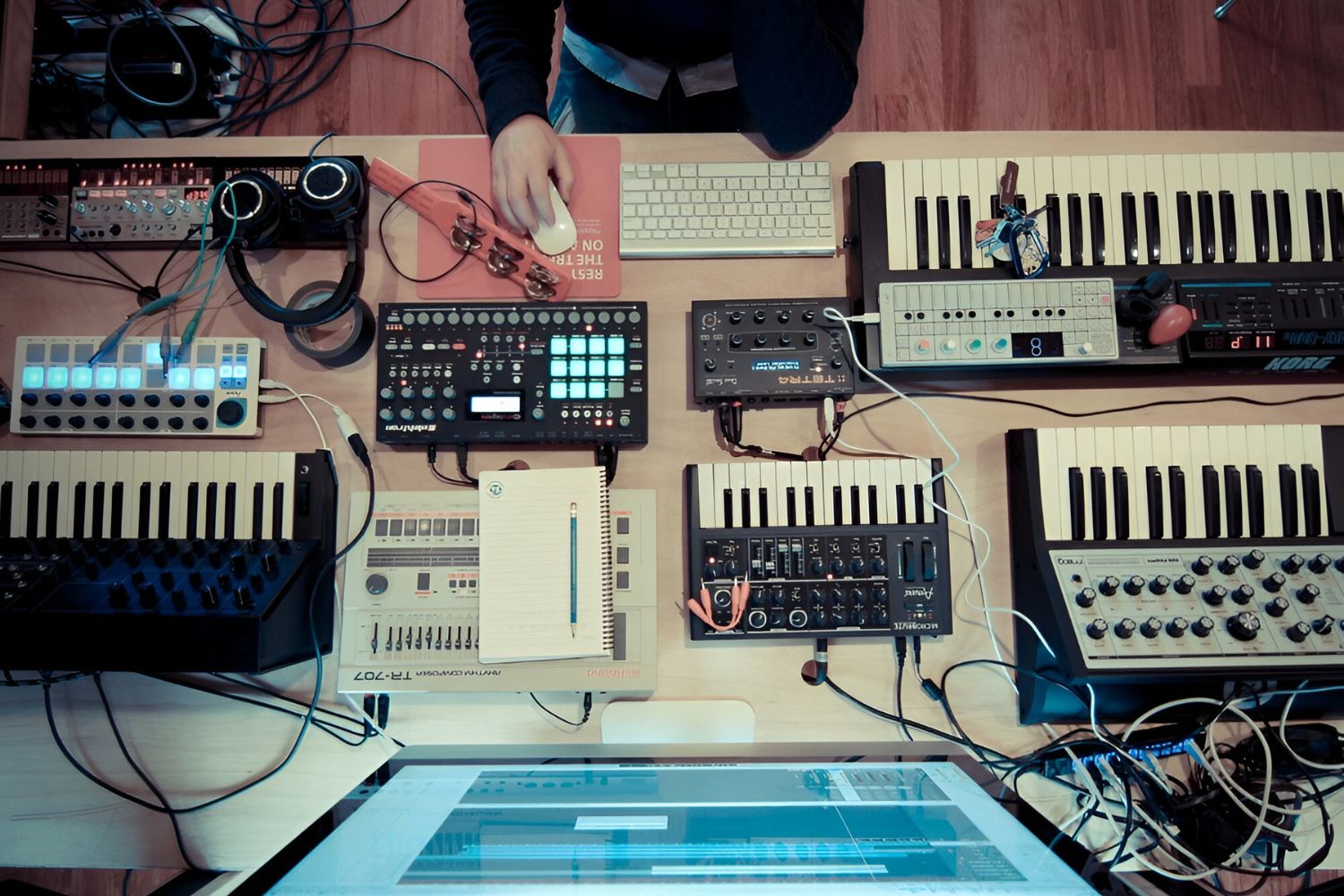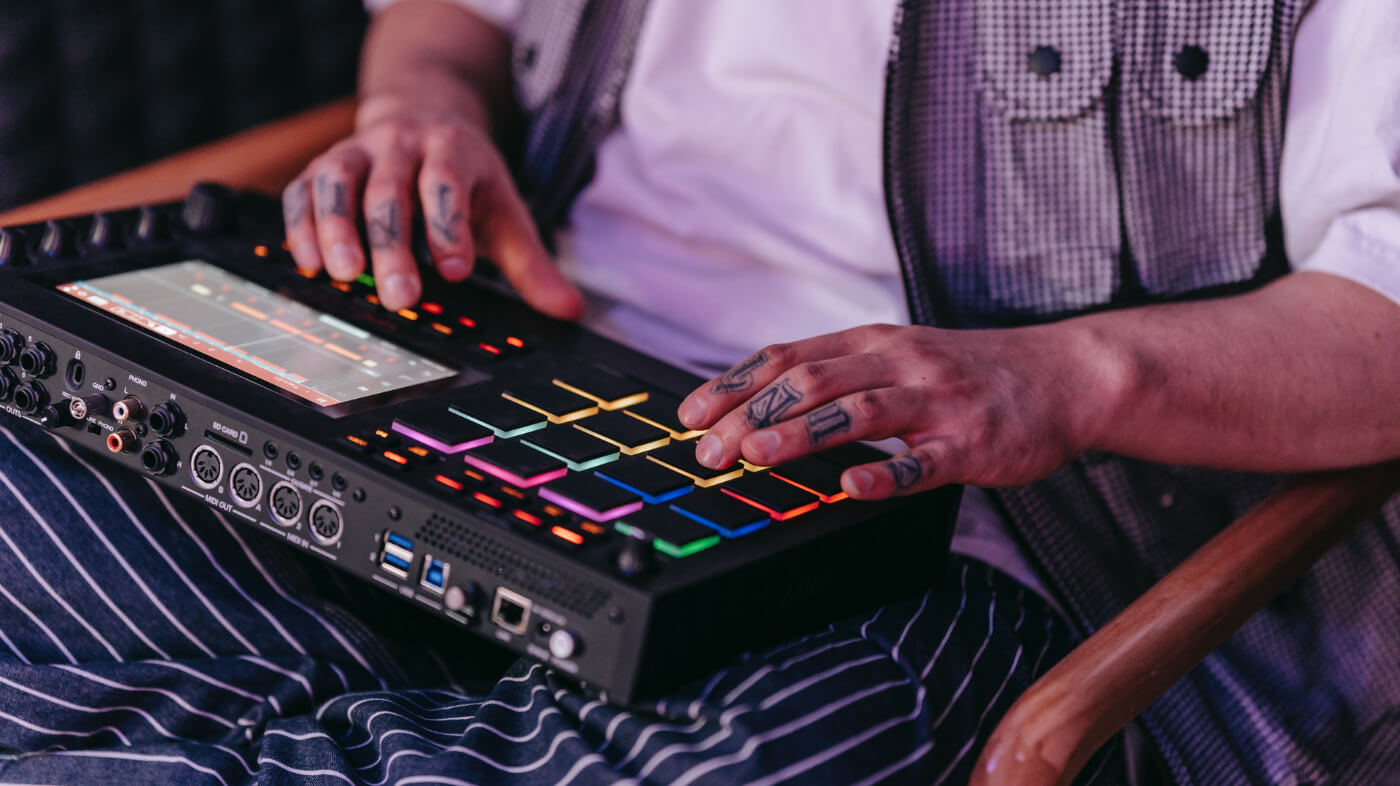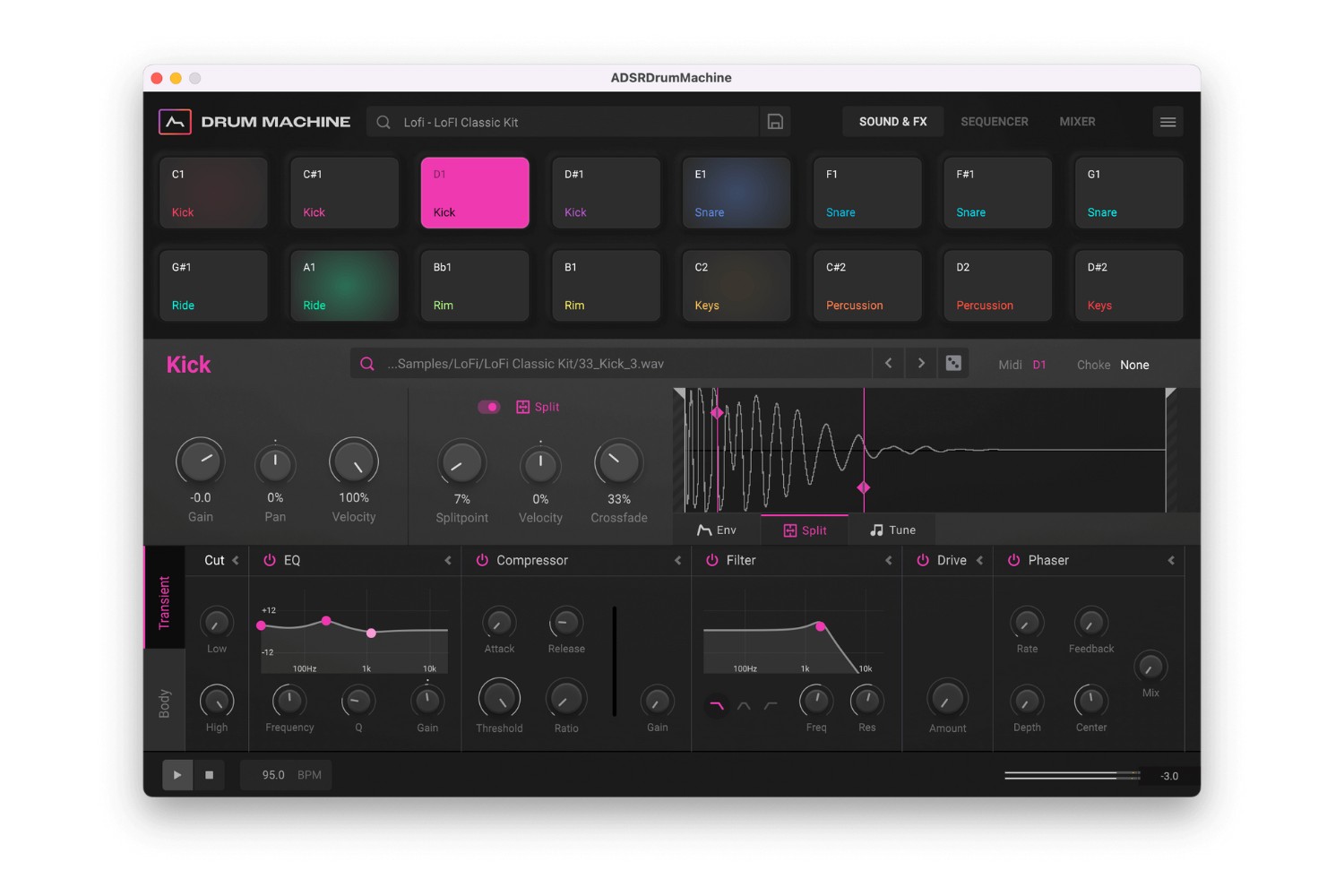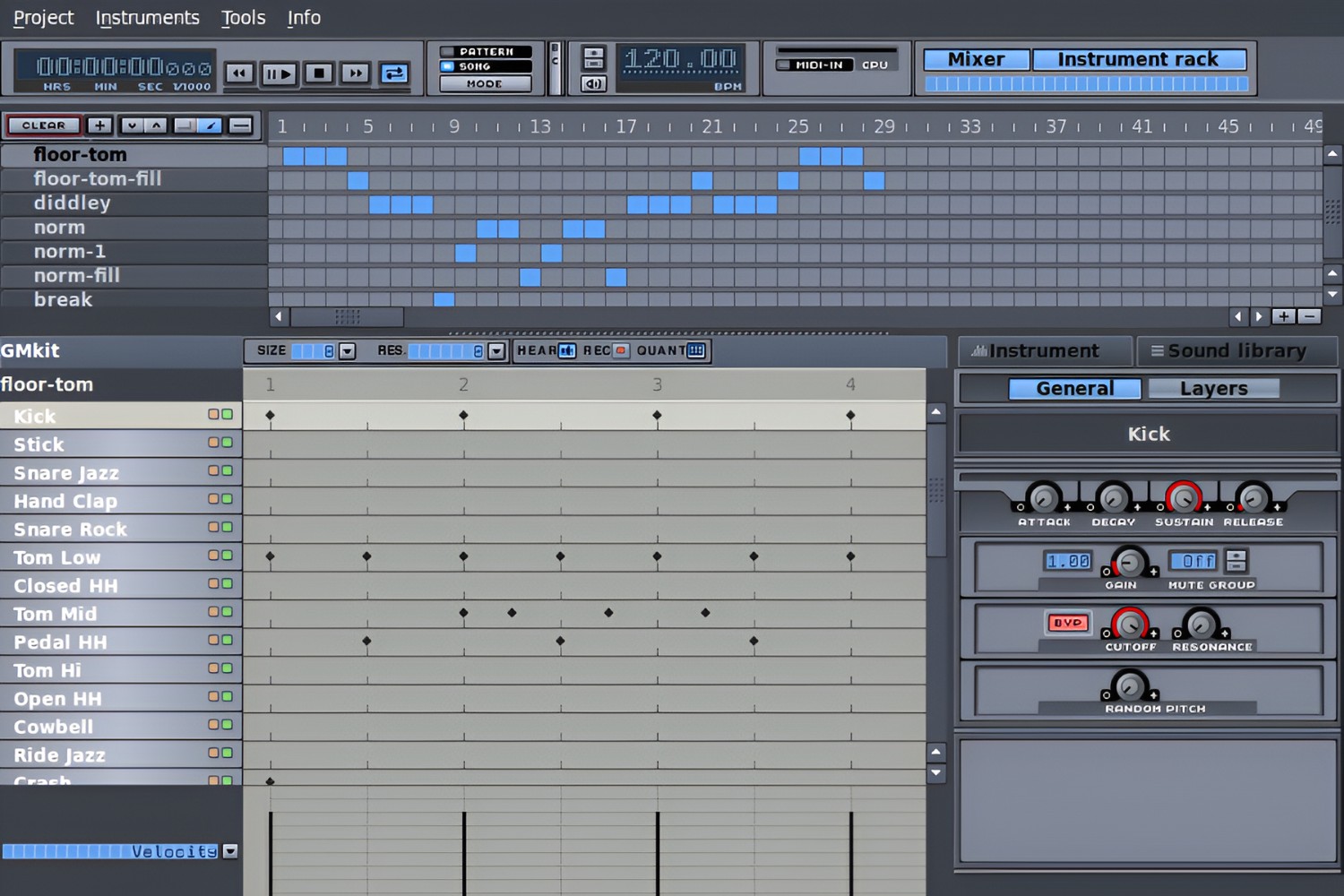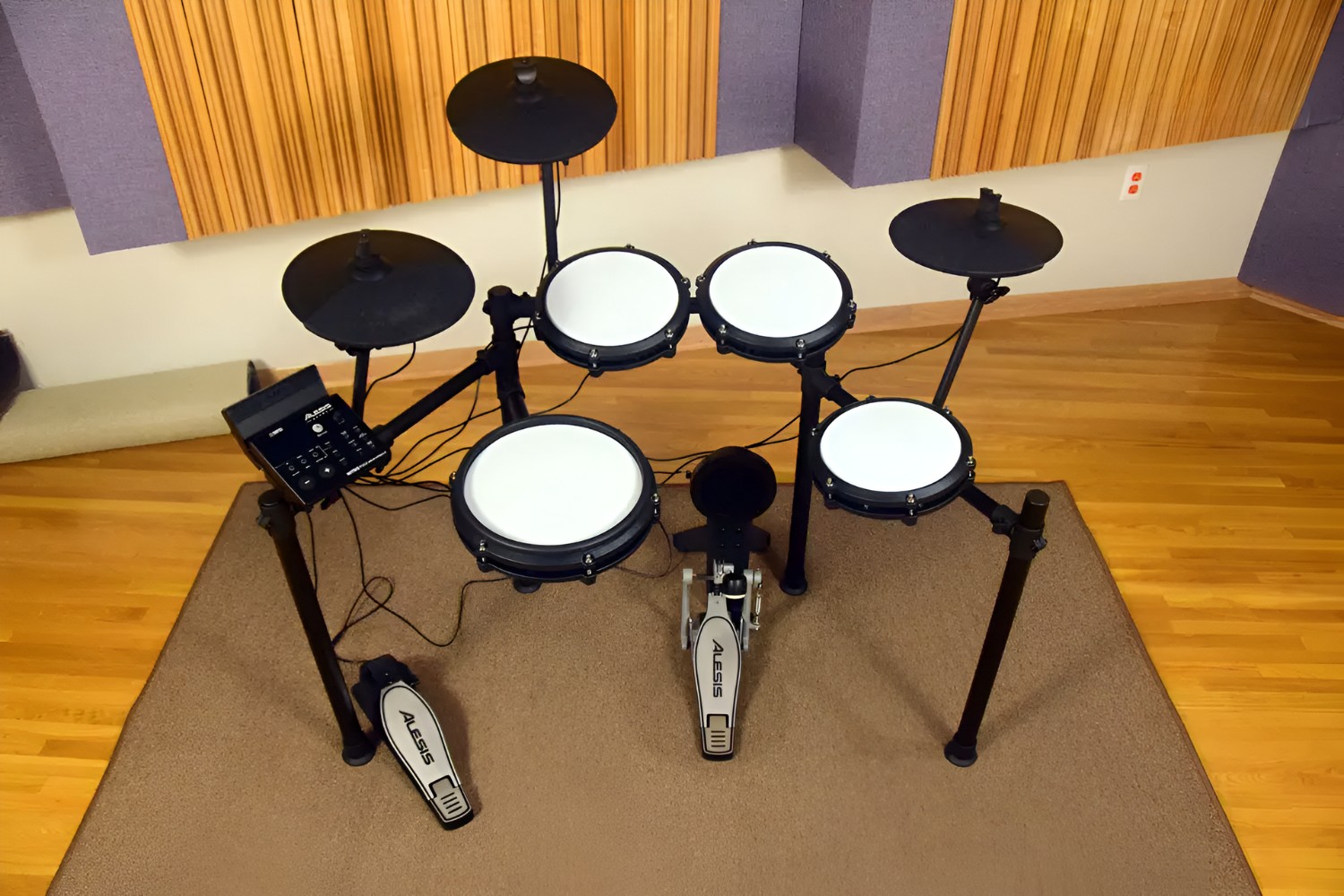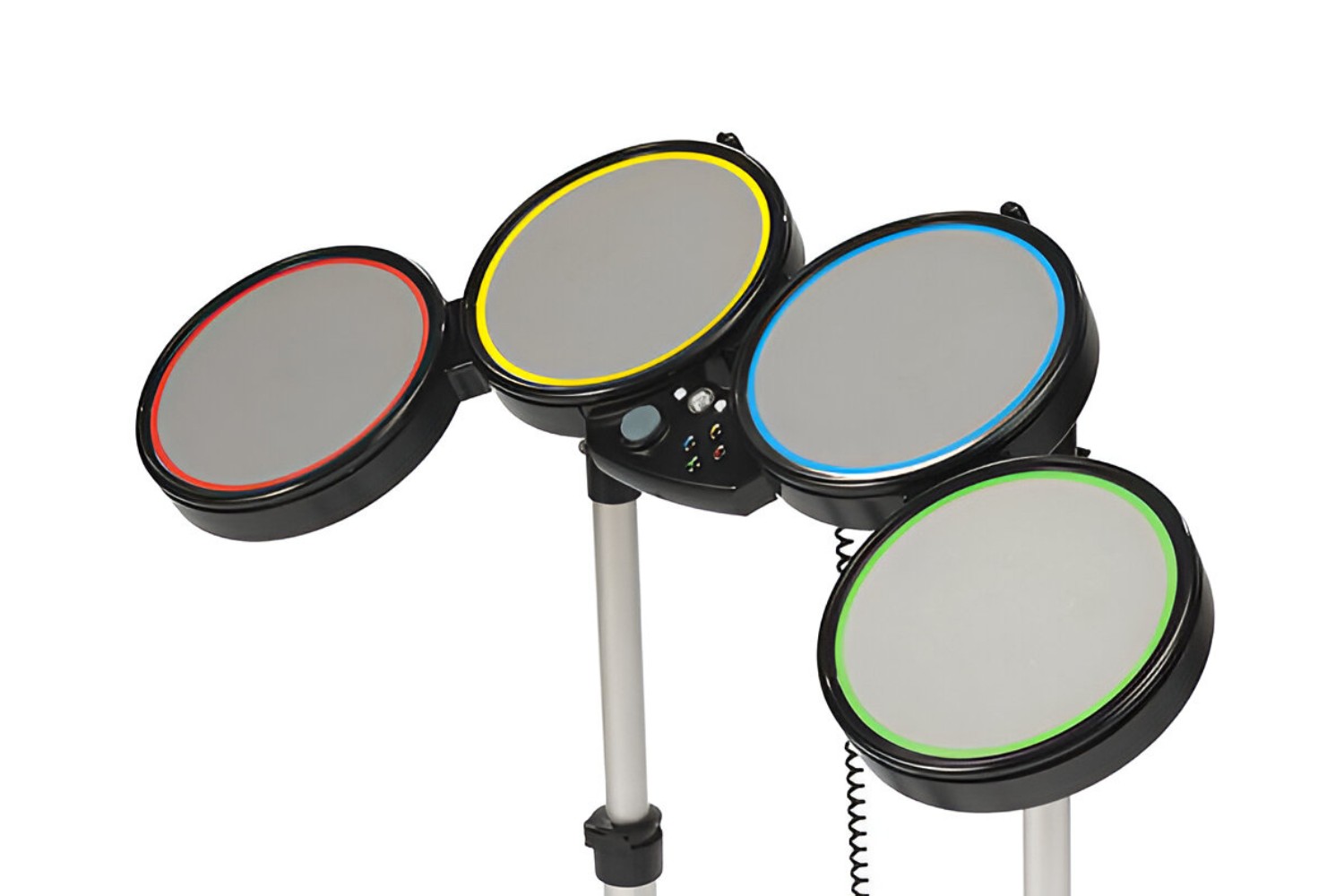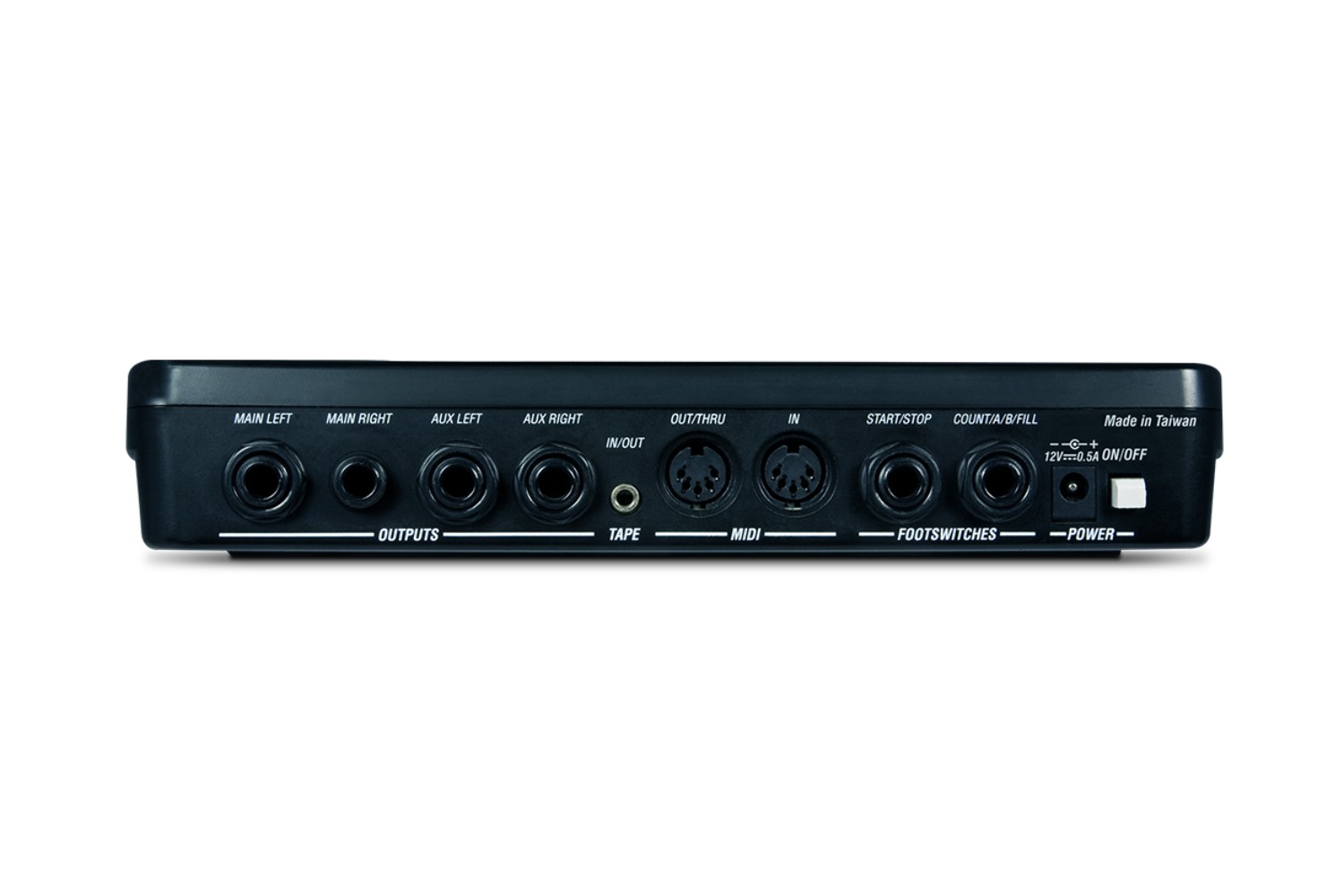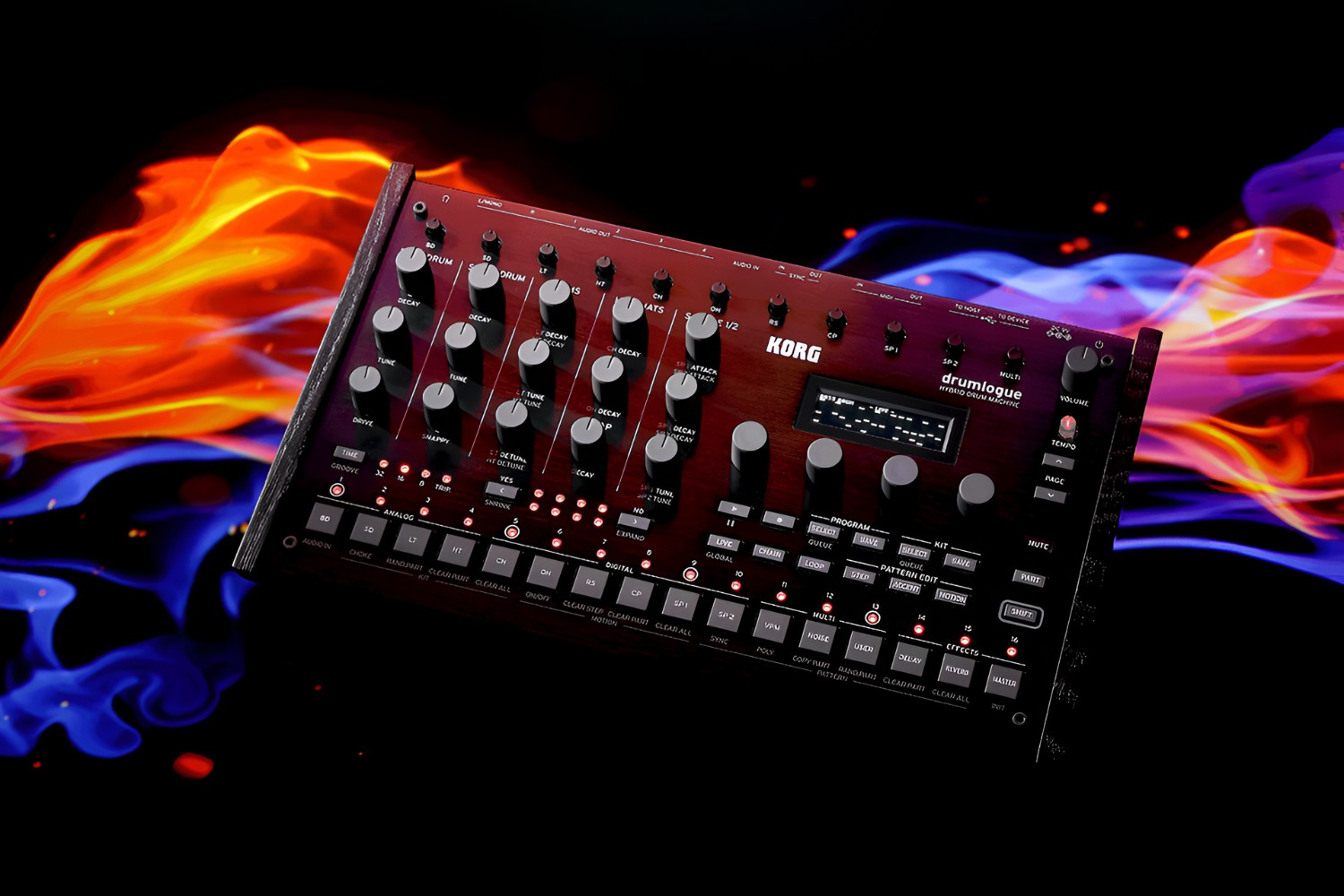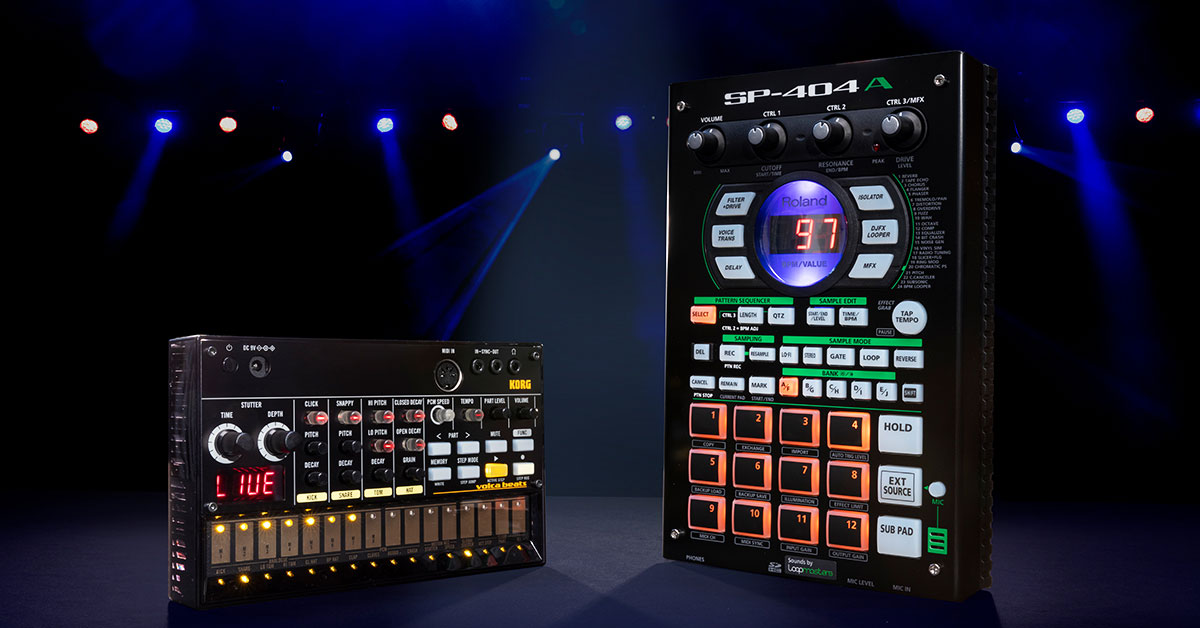Introduction
So, you want to add some rhythmic flair to your recordings? Look no further than a drum machine! Whether you're a solo artist or part of a band, a drum machine can be an invaluable tool for creating and recording beats. It offers a versatile and convenient way to lay down solid rhythmic foundations for your music. In this guide, we'll delve into the ins and outs of using a drum machine for recording, from understanding the basics to creating and editing drum patterns, and everything in between.
A drum machine is a standalone electronic instrument that is designed to replicate the sounds of drums and percussion instruments. It allows users to program and sequence rhythmic patterns, providing an alternative to a human drummer. With the ability to produce a wide range of sounds and styles, drum machines have become a staple in music production across various genres, from electronic and hip-hop to rock and pop.
Whether you're a seasoned producer or a beginner in the world of music production, a drum machine can open up a world of creative possibilities. By understanding its functionalities and mastering its use, you can elevate your recordings to new heights. In the following sections, we'll explore the fundamental aspects of using a drum machine for recording, including setting it up, choosing and editing drum sounds, creating and editing drum patterns, and incorporating it into your recording process.
Now, let's dive into the exciting realm of drum machines and discover how you can harness their power to infuse your recordings with captivating rhythms and beats. Get ready to unleash your creativity and take your music to the next level with the help of this versatile and dynamic musical tool.
Understanding the Basics of a Drum Machine
Before delving into the intricacies of using a drum machine for recording, it’s essential to grasp the fundamental components and functionalities of this versatile musical instrument. At its core, a drum machine is a device that synthesizes and plays back percussive sounds, allowing users to create rhythmic patterns and beats. While early drum machines were limited in their capabilities, modern versions offer a plethora of features, including extensive sound libraries, programmable patterns, and advanced sequencing options.
One of the key elements of a drum machine is its sound bank, which comprises a diverse array of drum and percussion sounds. These can range from classic analog drum hits to contemporary electronic samples, catering to a wide spectrum of musical genres and styles. Additionally, many drum machines allow users to import custom sounds, enabling a high degree of personalization and sonic experimentation.
Another crucial aspect of a drum machine is its sequencing and pattern programming functionality. This feature empowers users to arrange and manipulate rhythmic sequences, defining the structure and groove of their compositions. Whether it’s crafting a simple four-on-the-floor beat or creating complex polyrhythmic patterns, the sequencing capabilities of a drum machine provide a canvas for rhythmic exploration and creativity.
Furthermore, modern drum machines often integrate performance-oriented features such as real-time pad triggering, touch-sensitive interfaces, and dynamic sound manipulation controls. These elements enable musicians to interact with the drum machine in a tactile and expressive manner, adding a human touch to the programmed rhythms and enhancing the overall musicality of the performance.
Understanding the basics of a drum machine sets the stage for harnessing its full potential in the recording process. By familiarizing yourself with its sound palette, sequencing tools, and performance features, you can leverage the drum machine as a powerful tool for crafting compelling rhythmic foundations for your musical endeavors.
Connecting and Setting Up Your Drum Machine
Before you can start creating captivating beats with your drum machine, it’s crucial to ensure that it is properly connected and set up for seamless integration into your recording setup. The initial steps involve establishing the necessary audio and MIDI connections to interface the drum machine with your recording interface or mixer.
Begin by connecting the audio outputs of your drum machine to the input channels of your recording interface or mixer. Depending on the available connectivity options, this may involve using standard audio cables, such as 1/4-inch TRS or XLR cables, to establish the audio connection. Ensure that the levels are appropriately set to avoid clipping or distortion in the audio signal.
In addition to audio connections, MIDI connectivity can greatly enhance the functionality of your drum machine within a recording environment. If your drum machine supports MIDI input and output, you can connect it to a MIDI interface or directly to a MIDI-enabled recording device. This enables you to synchronize the drum machine with other MIDI-compatible instruments and devices, facilitating precise tempo synchronization and control.
Once the physical connections are established, it’s essential to configure the settings on your drum machine to align with your recording setup. This may involve selecting the appropriate audio output settings, MIDI channel assignments, and synchronization preferences. Refer to the user manual of your drum machine for specific instructions on configuring these settings.
Furthermore, integrating the drum machine into your recording environment may involve creating dedicated tracks in your digital audio workstation (DAW) or recording setup to accommodate the incoming audio and MIDI signals from the drum machine. Assigning inputs, setting levels, and configuring monitoring options within your recording software are essential steps to ensure that the drum machine is seamlessly integrated into your recording workflow.
By meticulously connecting and setting up your drum machine, you pave the way for a smooth and efficient recording process, allowing you to focus on unleashing your creative energy and capturing compelling rhythmic performances with ease.
Choosing and Editing Drum Sounds
One of the most exciting aspects of using a drum machine for recording is the ability to select and customize a diverse range of drum sounds to suit your musical vision. Modern drum machines offer an extensive palette of sounds, encompassing classic acoustic drum kits, electronic percussion, and unique experimental textures. Understanding how to choose and edit drum sounds allows you to sculpt the sonic character of your rhythmic compositions with precision and creativity.
When it comes to selecting drum sounds, consider the genre and mood of your composition. Whether you’re aiming for a vintage, organic drum sound or a futuristic, electronic vibe, the sound selection process plays a pivotal role in shaping the sonic identity of your recordings. Explore the sound library of your drum machine to audition different kick, snare, hi-hat, and percussion sounds, paying attention to their tonal characteristics, dynamics, and sonic textures.
Once you’ve identified the foundational drum sounds for your composition, it’s time to delve into the realm of sound editing. Many drum machines offer comprehensive sound shaping tools, including parameters such as pitch, decay, envelope shaping, and filtering. These editing capabilities empower you to tailor each drum sound to fit seamlessly within your mix, ensuring that they complement the other elements of your production.
Experiment with adjusting the pitch and decay of the drum sounds to achieve the desired tonal and rhythmic properties. Whether you’re aiming for punchy, tight kicks or resonant, sustained snares, the editing tools within the drum machine enable you to fine-tune the sonic characteristics of each sound. Additionally, exploring the filtering and modulation options can add depth and movement to the drum sounds, infusing them with a sense of dynamism and expressiveness.
Furthermore, some drum machines allow for sample import and manipulation, granting you the flexibility to incorporate custom sounds and textures into your rhythmic palette. This opens up a world of sonic possibilities, enabling you to infuse your compositions with unique and personalized drum elements that resonate with your artistic vision.
By carefully choosing and editing drum sounds, you can craft rhythmic textures that elevate your recordings to new heights, infusing them with character, depth, and sonic richness. Embrace the creative potential of sound selection and manipulation, and let your rhythmic compositions resonate with captivating energy and expression.
Creating and Editing Drum Patterns
Once you’ve selected and customized your drum sounds, the next step in harnessing the power of a drum machine for recording is the creation and manipulation of drum patterns. This pivotal stage allows you to craft rhythmic arrangements that serve as the backbone of your musical compositions, providing groove, energy, and momentum to your recordings.
Most modern drum machines offer intuitive pattern sequencing capabilities, enabling you to program and arrange rhythmic structures with ease. Whether you’re working with classic step sequencing interfaces or grid-based pattern editors, the process typically involves defining the timing, velocity, and placement of individual drum hits to construct cohesive and dynamic patterns.
When creating drum patterns, consider the rhythmic feel and groove that best complements your musical vision. Experiment with different time signatures, swing settings, and accent patterns to imbue your drum patterns with a sense of rhythmic personality and flair. Whether you’re aiming for a driving, straight-ahead rhythm or an off-kilter, syncopated feel, the flexibility of drum pattern creation empowers you to realize your rhythmic ideas with precision.
Furthermore, the ability to edit and manipulate drum patterns in real-time or through graphical interfaces provides a platform for expressive and dynamic rhythmic exploration. Features such as pattern chaining, probability-based triggering, and parameter automation allow for evolving and evolving drum patterns that transcend static repetition, adding depth and variation to your compositions.
Additionally, many drum machines offer pattern storage and recall functionality, enabling you to create and archive a library of rhythmic ideas and variations for use in different musical contexts. This facilitates a streamlined workflow, allowing you to access and experiment with diverse drum patterns as you develop and refine your recordings.
By embracing the art of creating and editing drum patterns, you infuse your recordings with rhythmic vitality and character, setting the stage for engaging and dynamic musical experiences. Let the rhythmic canvas of your compositions come to life through the expressive and versatile capabilities of drum pattern creation, and watch as your musical vision unfolds with captivating energy and momentum.
Recording with a Drum Machine
As you embark on the recording phase with your drum machine, you have the opportunity to capture compelling rhythmic performances that form the foundation of your musical creations. Whether you’re tracking live instrumentation alongside the drum machine or solely relying on its rhythmic prowess, the recording process is where the sonic tapestry of your compositions begins to take shape.
Before commencing the recording session, it’s essential to establish a clear vision for the rhythmic elements within your compositions. Whether you’re aiming for tight, precise drum tracks or loose, expressive grooves, articulating your rhythmic intent sets the stage for a focused and purposeful recording process.
When recording with a drum machine, consider the sonic characteristics and tonal nuances of the drum sounds you’ve selected and edited. Pay attention to factors such as dynamics, tonal balance, and spatial placement within the stereo field, ensuring that each drum sound contributes to a cohesive and impactful rhythmic ensemble.
Furthermore, the recording process offers opportunities for performance-based enhancements, such as real-time parameter manipulation, dynamic accenting, and nuanced timing variations. Leveraging the expressive features of your drum machine, such as velocity-sensitive pads and real-time sound shaping controls, allows you to infuse your rhythmic performances with a sense of human touch and musicality.
As you capture the drum machine performances into your recording setup, consider the integration of MIDI synchronization and control to ensure precise tempo alignment and synchronization with other musical elements. This cohesive integration facilitates a seamless blending of the drum machine’s rhythmic output with other instruments and sonic layers, resulting in a unified and coherent musical tapestry.
Additionally, the recording phase provides an opportunity to experiment with layering, overdubbing, and sonic manipulation, allowing you to expand the sonic depth and complexity of your rhythmic compositions. Whether it’s adding subtle embellishments, crafting intricate fills, or exploring textural variations, the recording process serves as a platform for sonic exploration and refinement.
By embracing the recording phase with your drum machine, you breathe life into your rhythmic ideas, capturing dynamic and expressive performances that resonate with the essence of your musical vision. Let the rhythmic heartbeat of your compositions pulse with vitality and energy, as you harness the creative potential of the drum machine to shape captivating and immersive musical experiences.
Tips for Using a Drum Machine in Recording
As you embark on the journey of integrating a drum machine into your recording process, consider the following tips to maximize its potential and elevate the rhythmic dimension of your musical productions:
- Explore Sound Layering: Experiment with layering multiple drum sounds to create rich and textured rhythmic palettes. Combining complementary percussion elements can enhance the depth and complexity of your drum tracks, adding sonic richness and dimension.
- Utilize Performance Controls: Leverage the performance-oriented features of your drum machine, such as velocity-sensitive pads, pressure-sensitive triggers, and real-time sound manipulation controls, to infuse your rhythmic performances with expressive dynamics and nuances.
- Experiment with Swing and Groove: Embrace the swing and groove settings of your drum machine to introduce subtle rhythmic variations and syncopated feels into your patterns. This can inject a sense of organic, humanized rhythm into your compositions, enhancing their musicality.
- Customize Sequencing Patterns: Dive into the intricacies of pattern sequencing and editing to create evolving and dynamic drum patterns. Explore features such as pattern chaining, probability-based triggering, and parameter automation to introduce variation and movement into your rhythmic arrangements.
- Integrate MIDI Synchronization: Utilize MIDI synchronization to align your drum machine with other MIDI-compatible instruments and devices in your recording setup. This ensures precise tempo synchronization and facilitates cohesive integration of rhythmic elements across your musical productions.
- Embrace Sound Design: Delve into sound design techniques within your drum machine to sculpt unique and personalized drum sounds. Experiment with pitch, decay, filtering, and modulation to craft custom drum elements that resonate with your artistic vision.
- Capture Dynamic Performances: When recording with a drum machine, aim to capture dynamic and expressive performances. Emphasize nuanced timing variations, dynamic accenting, and real-time parameter manipulation to infuse your rhythmic tracks with a sense of vitality and musical expression.
- Experiment with Effects Processing: Explore the integration of effects processing, such as reverb, delay, and modulation, to enhance the sonic character of your drum machine’s output. This can add depth, space, and sonic interest to your rhythmic compositions.
- Organize and Catalog Patterns: Establish a system for organizing and cataloging drum patterns within your drum machine. Creating a library of rhythmic ideas and variations allows for easy access and experimentation, streamlining your creative workflow.
- Collaborate and Iterate: Embrace collaboration and iteration in your use of the drum machine. Share your rhythmic sketches with collaborators, seek feedback, and iterate on your ideas to refine and evolve the rhythmic landscape of your musical productions.
By embracing these tips, you can harness the full potential of your drum machine, infusing your recordings with captivating rhythms, expressive performances, and dynamic sonic textures. Let the rhythmic canvas of your compositions come to life through the creative exploration and utilization of the drum machine, and watch as your musical vision unfolds with compelling energy and depth.
Conclusion
As we conclude our exploration of using a drum machine for recording, it’s evident that this versatile musical tool offers a wealth of creative possibilities for shaping rhythmic landscapes and enhancing musical productions. From understanding the basics of a drum machine to creating and editing drum patterns, each facet of its utilization contributes to the dynamic and expressive potential it brings to the recording process.
By delving into the intricacies of sound selection, pattern creation, and performance integration, musicians and producers can harness the rhythmic prowess of a drum machine to infuse their compositions with vitality, energy, and character. The seamless integration of a drum machine into the recording setup enables the capture of compelling rhythmic performances that form the backbone of musical creations, setting the stage for immersive and engaging musical experiences.
Throughout this guide, we’ve explored the art of connecting, setting up, and utilizing the creative features of a drum machine, highlighting the importance of sound layering, performance controls, and sound design techniques in sculpting captivating rhythmic textures. Additionally, the integration of MIDI synchronization, effects processing, and collaborative iteration serves to expand the sonic depth and complexity of rhythmic compositions, enriching the musical tapestry with expressive dynamics and nuances.
As musicians and producers continue to embrace the rhythmic potential of drum machines, the evolution of sound and technology opens new avenues for sonic exploration and rhythmic innovation. The tips and insights shared in this guide provide a roadmap for leveraging the full potential of a drum machine, empowering creators to craft rhythmic arrangements that resonate with artistic vision and creative expression.
As you venture into the realm of music production and recording, may the rhythmic heartbeat of the drum machine inspire and invigorate your musical endeavors, infusing your compositions with captivating energy, vitality, and depth. Embrace the creative potential of the drum machine, and let its rhythmic canvas become a vibrant and integral part of your musical journey.







